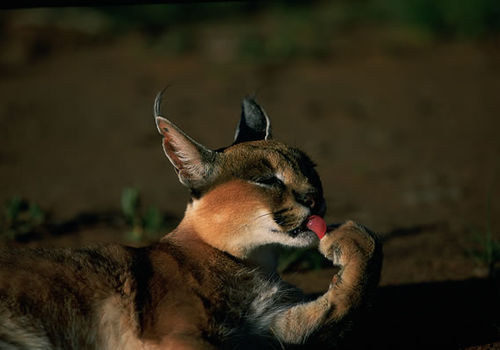
Caracal
Felis caracalCaracal
Introduction: The name caracal (Felis caracal) is derived from a Turkish word 'garah-gulak' or 'black ear'. They were once tamed and trained for bird hunting in Iran and India. They were put into arenas containing a flock of pigeons and wagers were made as to how many the cat would take down, hence the origination of the expression 'to put a cat amongst the pigeons'. Apparently it is capable of leaping into the air and knocking down 10-12 birds at one time!
Caracal are associated with open country and savannah woodland areas and in particular scrubby, arid habitats. They are adept tree climbers and become solitary straight after mating. They can be freely observed at Okonjima Bush Camp, an Africat concern.
Distribution: Caracal occur widely in Namibia, except for in the Namib Desert. They are difficult to spot due to their nocturnal and highly secretive manner.
Diet: They prefer birds, rodents, and other small mammals, but will take whatever is available.
Colouring: This small cat has dense short reddish-brown fur. The under parts of chin and body are white and a narrow black line runs from the corner of the eye to the nose. Its ears are long, narrow and tipped with long black tufts of black hair.
Breeding: The young may be born at various times of the year. A gestation period of 69-78 days is reported, and three young per litter are the norm (up to five kittens are possible). Litters may be born and hidden in abandoned burrows, ant-bear holes, rock crevices or hollow trees.
Size: Caracals are more robustly built than their close relatives, servals. Adults males weigh up to 17kg with the female caracal weighing around 12kg. They stand at a shoulder height of 45cm.
Become a citizen scientist & contribute to the long-term survival of Namibia's wild carnivores by logging your sightings on the Carnivore Tracker App
Klein Windhoek

